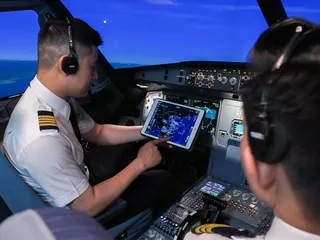Dual-Role Pilots Strengthen Training and Line Operations
Contact Our Team
For more information about how Halldale can add value to your marketing and promotional campaigns or to discuss event exhibitor and sponsorship opportunities, contact our team to find out more
The Americas -
holly.foster@halldale.com
Rest of World -
jeremy@halldale.com

The aviation industry continues to face growing pilot demand, with forecasts projecting more than 600,000 new commercial pilots needed globally by 2042. One approach to improving training quality has been the use of airline pilots who also serve as instructors, blending recent operational experience with classroom teaching.
Marcos Giner, Deputy Chief Flight Instructor for Type Rating Training at BAA Training, noted the value of this model. “From my experience at BAA Training, I constantly see the true value of having active airline pilots as instructors. You can teach a checklist—or you can explain what it feels like to run that checklist under pressure at 35,000 feet in turbulence. That’s the difference,” he said.
Giner explained that pilots currently flying the line are up to date with procedures, aircraft systems, and daily operational nuances such as air traffic control patterns and airline-specific practices. This allows instructors to bring real-time relevance into training. “Students tend to engage more when they see the relevance,” he added.
The benefits extend to instructors themselves. Teaching requires reflection and precision, reinforcing discipline in communication, decision-making, and crew coordination. “When pilots switch between operational flying and instructional duties, they become more disciplined in how they brief, communicate, and make decisions. There’s less room for complacency. You become more deliberate,” Giner said.
He emphasized that teaching shapes more than technical knowledge, influencing soft skills such as communication habits and stress management. “There’s a level of emotional intelligence that comes from teaching that doesn’t always develop through line flying alone,” he said.
This dual-role approach supports both effective pilot training and safer airline operations, reinforcing Crew Resource Management principles across the industry.


